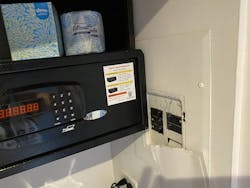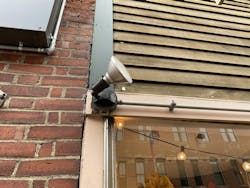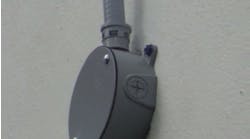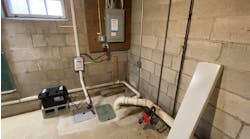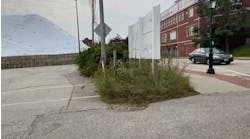All references are based on the 2023 edition of the NEC.
Hotel Room Horrors
I spotted this enclosed panelboard during a recent stay at a hotel. The room safe was installed in a position that completely obstructs some of the cover screws for the panelboard enclosure. That safe would probably need to be taken out before you could remove the screws for panelboard cover, which isn’t cool! It’s also not up to Code.
The working space required by Sec.110.26(A) is obstructed by the safe and the shelves above the safe. One of the circuit breaker blanks is partially pried out of the panelboard cover. This increases the risk of shock as curious people, including kids, could easily stick a finger in that opening and make contact with the energized terminals of busbars inside the enclosure. Section 408.7 requires unused circuit breaker openings to be closed up in a manner that provides protection equivalent to the enclosure walls. Section 110.27(A) requires live parts to be guarded against accidental contact by approved enclosures when not protected by the other means specified in Sec. 110.27(A)(1) through (A)(4). None of those other means is applicable here.
Additionally, it appears as though the door on the cover, which is normally used to protect the circuit breakers, was intentionally ripped off its hinges. I’m guessing that was probably done to reset a tripped circuit breaker. I would say a broken door violates Sec. 110.12(B) because the integrity and mechanical strength of the enclosure has been compromised.
A Rain Catcher
With the position of that weatherproof lampholder facing towards the sky, I think that it will act like a cup and fill with rainwater causing all kinds of problems. The weatherproof lampholders that I have installed are provided with instructions or are stamped with wording such as “aim horizontal or below” so snow and rain do not enter the lampholder. It might be difficult to see in this photo, but this lampholder had those words stamped on its side. Failing to follow instructions can lead to an increased risk of fire and shock. It is also a violation of Sec. 110.3(B).
Another problem I noticed was the type of set screw EMT connector used on the raceway connected to the round weatherproof box. This type of EMT connector is not suitable for use in this wet location. Section 314.15 requires boxes, conduit bodies, outlet box hoods, and fittings (such as connectors) installed in wet locations to be listed for use in wet locations. The EMT raceway in the top left of the photo was installed using compression connectors, which may be suitable for this wet location.

